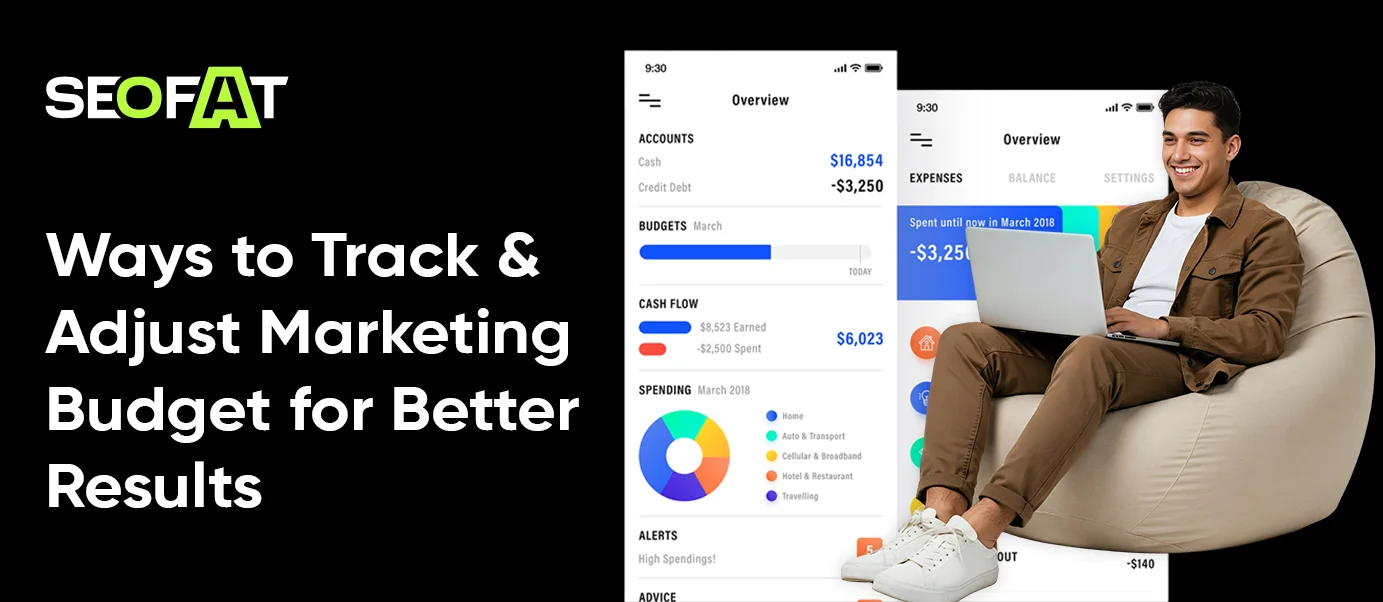Today’s modern businesses aiming to grow in the online market, they need a marketing budget plan. And, why not? It outlines the strategy with investment so that businesses can allocate funds well for promoting their products or services.
The hardest part about setting a marketing budget really depends on what kind of business you run. A tech startup and an online shop might both want growth, but how they get there is totally different. One plan that helps a software brand climb ranking might flop for an eCommerce store. That’s just how it is — every business plays by its own rules, with its own goals and audience.
That’s why read this blog to help you figure out what actually makes sense for your brand. Find ideas that help you spend smarter, reach people who care, and keep your growth steady without stretching your budget thin.

Why Marketing Budgets Are Essential in Modern Business
Let’s be honest — marketing without a budget is just guessing. You might get lucky a few times, but it won’t last. A budget gives you direction. It shows where your money’s going and helps you focus on what actually drives results.
Without it, you risk spending on things that don’t move the needle. But when you plan it right, you know what works, stay organized, and see steady growth without wasting cash.
- Strategic Budget Allocation: A smart budget makes sure your money goes to things that actually work — maybe that’s ads, events, or influencer collabs. You reach the right people without throwing money at stuff that doesn’t deliver.
- Minimizes the Need for unnecessary ad payments: Without a budget, marketing can become an expensive trial and error. Setting limits stops overspending on platforms or campaigns that don’t deliver.
- Strengthens Alignment with Business Goals: When spending aligns with business goals, it helps achieve short-term wins and grow steadily over time.
- Shows Clear Returns: Budgets make it easy to track what works. It proves which campaigns bring in the most value and justify every marketing dollar spent.
Factors to Consider Before Setting a Marketing Budget

So, before you begin planning a marketing budget, consider factors that influence its success.
Business Stage & Growth Goals
How much you spend really just depends on where your business is right now.
If you’re just starting out, you’ll probably spend more trying to get people to notice you. Once you’ve got some traction, the focus changes — it’s about reaching more people and getting steady sales.
For brands that have been around for a while, the goal’s a little different. You’re not chasing visibility as much as keeping your existing customers happy and testing a few new ideas.
Industry Dynamics
How crowded is your market? In competitive spaces like e-commerce or software, companies spend more to stay visible across multiple channels. Businesses that serve a small, specific audience often succeed with focused, smaller campaigns. Watching competitors helps plan a budget that fits real challenges and uncovers opportunities others overlook.
Target Audience Behavior
Who are your customers, and how do they behave? Younger audiences love videos and influencer content, so budgets shift there. Professionals prefer platforms like LinkedIn and email updates. Watching audience habits helps decide where to spend, making marketing more effective and sales easier. Know what your customers enjoy, and your budget works smarter, not harder.
Marketing Channels & Costs
Different channels cost different amounts and take different times to show results. Paid ads give quick attention but cost more. Organic strategies like content posts or search visibility grow slowly but last longer. A good budget balances fast exposure with steady growth, helping your brand stay visible today and strong tomorrow.
Seasonality & Market Trends
Retail spikes around holidays, and travel picks up in vacation seasons. Understanding these trends allows smart budget moves. Spend more when customers are active, and save during slow months. Following trends keeps your money focused where it matters most, avoiding waste while grabbing top opportunities.
Historical Performance Data
What worked before? Reviewing past campaigns shows which ads, posts, or channels brought results. Look at cost per customer, click rates, and sales conversions. Use this data to repeat wins and drop tactics that underperform. Learning from history lets your budget flow toward success, avoiding guesswork and boosting confidence in every decision.
Competitor Benchmarking
Where do your competitors spend their marketing money? What platforms do they favor, and which areas are ignored? Watching rivals reveals gaps you can fill. Wise brands use this knowledge to spend smartly, grab attention, attract customers, and stay ahead. Watching competitors helps you make better choices and stay competitive.
How to Determine the Right Marketing Budget Percentage for Your Business
Figuring out how much to spend on marketing isn’t easy. There’s no fixed number that works for everyone. It really comes down to a few things — what kind of business you run, what stage you’re in, and how much competition you’re up against.
The idea is simple: put enough money toward marketing to help your business grow, but not so much that it messes with your cash flow. When you plan it out properly, your spending starts working for you instead of against you.
So, how do you find that balance?
Align With Revenue & Growth Goals
Start with what your business actually makes and where you want it to go. If you’re trying to grow fast, expect to spend a little more to keep that momentum. There’s no perfect formula for this stuff — it’s more about finding a number that helps you move forward without messing up your cash flow.
Consider Industry Norms
Every business field has its own usual range. Tech startups often put around 10 to 15% of their revenue into marketing because they need visibility fast. Retail businesses usually don’t go that high — somewhere between 5 and 8% is more common. These numbers aren’t rules, but they give you a sense of what others in your space are doing.
Balance Acquisition & Retention
Bringing in new customers always costs more than keeping the ones you’ve already got.
That’s just how it goes.
A smart budget leaves room for both — finding fresh faces and keeping your regulars happy.
When you do that, sales don’t just come and go. They stay steady, and your business keeps growing without burning out your audience or your wallet.
Brand Maturity
If your brand’s still new, you’ll probably have to invest more at first — getting people to notice you takes time and money. Once you’re established, you can spend smarter instead of spending big. Mature brands have the advantage of recognition, so they can often do more with less. The key is to adjust your budget as you grow — there’s no one-size-fits-all plan here.
Ways to Track & Adjust Marketing Budget for Better Results

The marketing budget amount is not fixed. That’s because needs shift, customer habits change, and new trends appear fast. Even the smartest plan can lose its impact without regular attention. Keeping an eye on spending and tweaking small areas helps your budget work better, avoids unexpected surprises, and guides your brand steadily toward growth. Here’s how to keep your budget on the right track:
Set Clear, Measurable Goals
Decide what really matters for your marketing. Track things like new customers, sales from ads, or average spend per visitor. Clear goals show what works and what needs a little push.
Review Your Budget Regularly
Don’t just look at your numbers once a year. Check in monthly, or at least quarterly. Some campaigns will surprise you — good or bad. Shift money toward what’s working and pause the stuff that’s not pulling results. It’s less about cutting and more about fine-tuning.
Use Analytics Tools
Data doesn’t need to be complicated. A quick look at your dashboard can show what’s getting clicks, who’s showing up, and where your money’s actually going. Over time, patterns pop out. Those patterns are gold — they tell you what deserves your focus.
Test New Ideas
Not every new idea needs a big budget. Try things out in small doses. A new ad headline, a different type of post, or a short trial campaign — test it and see what happens. Some ideas won’t work at all, but the ones that do can pay off in a big way.
Match Marketing to Business Changes
If your business adds a product, opens a market, or updates its image, update your marketing spend. This keeps every dollar supporting new goals and growth plans.
Conclusion
Overall, building a strong online presence starts with a smart marketing budget that guides every move. Spending wisely and tracking results helps your business grow steadily while turning each dollar into a meaningful step forward. Simple plans and regular checks keep your marketing on track and show what works best for your audience.
However, there is something that needs your attention—choose the right digital marketing company that builds customized package for your business and is transparent about pricing and packages. And that’s none other than SEOFAT!
SEOFAT helps businesses grow online with smart strategies and strong SEO support. We focus on campaigns that bring real visitors, increase engagement, and convert interest into sales. With SEOFAT, your marketing budget does more work for your growth and success.















